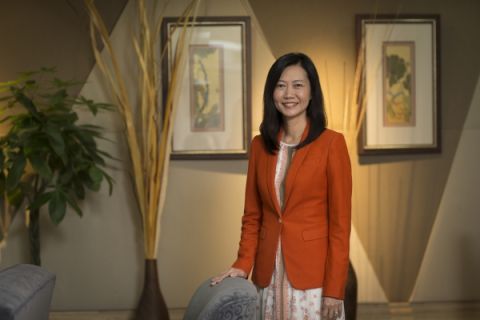
By Alvin Lee
SMU Office of Research & Tech Transfer – Pareto efficiency, as defined by the Organisation for Economic Co-operation and Development (OECD), “occurs when resources are so allocated that it is not possible to make anyone better off without making someone else worse off”. As explained by the first fundamental theorem of welfare economics, it obtains under perfect competition in static markets.
While Pareto efficiency is achievable in a static economy, it appears much harder to obtain in an intertemporal model since it entails that agents forecast future prices in markets that will only open in subsequent periods.
“When you are interacting in the markets that are open today, you're making decisions of how much to borrow and save,” explains Professor Shurojit Chatterji, Professor of Economics at Singapore Management University (SMU). “The main idea is that the prevailing market prices tomorrow will effectively determine the interest rate and therefore the value of your savings. But those markets are not open today, they will only be open tomorrow.”
Economists typically work on the assumption of “perfect foresight”, where all agents agree on future price forecasts and moreover these forecasts all turn out to be correct. Under this hypothesis, pareto efficiency obtains whenever there is an asset that allows intertemporal saving and lending.
This is not surprising, as he adds: “What you're doing is postulating that agents can effectively see what tomorrow's prices are. You are effectively converting this intertemporal two period economy into a static economy. You can't actually physically transact today in tomorrow’s markets, but you can actually see those prices and you can just calibrate your borrowing and savings as you would do in the static economy and implement those plans when the markets do open.”
Convenient though it is, perfect foresight remains a very unrealistic hypothesis on agents forecasts, one that does not sit well with the decentralised nature of trade postulated by competitive markets. So why is this hypothesis so prevalent, asks Professor Chatterji.
“Presumably because it is deemed indispensable to the proper functioning of the economy,” he observes. “By properly I mean, the final outcomes that results from intertemporal trade should be Pareto efficient. The prevalent view was that while you might get Pareto efficient outcomes when agents have unaligned forecasts, it can at best be a fluke, so that if you were to perturb any of the underlying features of the economy a bit, this conclusion would vanish. That was one of the main reasons that kept people tied to this model of perfect foresight; nowadays economists seldom question it.”
He adds: “I would argue that it's not a very satisfactory way to model dynamics because you're in a sense doing away with the very questions that dynamics should be interested in. So we model economic activity in the tradition of Temporary General Equilibrium theory, where agents are allowed to make forecasting errors.”
The research
That is the underlying theme of Professor Chatterji’s working paper titled “Decentralizability of efficient allocations with heterogenous forecasts”, which he is co-authoring with Professor Atsushi Kajii at the Kwansei Gakuin University.
“Just because you are abandoning perfect foresight doesn't necessarily mean that the economy immediately starts working very badly,” he elaborates. “Free markets working with heterogeneous diverse forecasts may still be able to achieve the benchmark of Pareto efficiency. We show that Perfect foresight is not needed for the economy to deliver efficient outcomes in a robust sense.
“What we are trying to suggest is that more attention should be given to the structure of these heterogeneous forecasts so as to get a better understanding of what sort of forecasting configurations lead the economy to function at near optimum levels.”
Professor Chatterji says his research should be understood at a policy level since “the set of possible targets for the economy may be much larger than first believed” than when the focus was on perfect foresight solutions. “But now there's a much larger set that one can actually envisage as a target for policy,” he tells the Office of Research and Tech Transfer.
He points out that it is quite reasonable to make a wrong forecast since “most of the time we are trading at prices that we are surprised at”. But should incorrect forecasts be accepted regardless of their inaccuracy? How do you determine an acceptable margin of error?
One answer may lie in the concept of ‘retrospective consistency’.
“Let's say that you are forecasting prices of commodities tomorrow to determine how much you should save and what you should consume today,” he says. “Come tomorrow and your forecast is wrong. Suppose you find yourself in a situation where, given the prices that you now see and the consumption that you've selected today, and you could hypothetically go back in time, would you want to change your consumption yesterday (while keeping your savings unchanged)?
“If the answer is no to that, then we can say that the solution displays a no regret property. Efficiency is consistent with such a no-regret type forecast.”
Back to Research@SMU Feb 2022 Issue
See More News
Want to see more of SMU Research?
Sign up for Research@SMU e-newslettter to know more about our research and research-related events!
If you would like to remove yourself from all our mailing list, please visit https://eservices.smu.edu.sg/internet/DNC/Default.aspx

